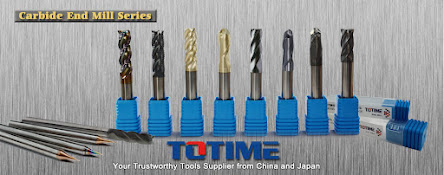Threading Inserts and Grooving Inserts: Enhancing Precision and Efficiency in Metalworking
Metalworking is a complex and intricate process that requires careful attention to detail and the use of specialized tools. When it comes to threading and grooving operations, having the right cutting inserts is essential for achieving precise and efficient results. In this blog post, we will explore the significance of threading inserts and grooving inserts in the world of metalworking and how they contribute to enhanced precision and efficiency.
Threading Inserts:
Threading inserts are cutting tools designed specifically for
creating threads on a workpiece. These inserts are available in various shapes,
sizes, and materials to accommodate different threading requirements. They are
commonly used in turning, milling, and threading machines.
One of the primary benefits of threading inserts is their
ability to produce consistent and accurate threads. They feature multiple
cutting edges that facilitate efficient material removal, reducing the time
required to complete the threading operation. Threading inserts also offer
excellent tool life, meaning they can withstand high cutting speeds and
maintain consistent performance over extended periods of use.
Grooving Inserts:
Grooving inserts,
on the other hand, are cutting tools used to create grooves or recesses on a
workpiece's surface. These grooves serve various purposes, such as providing
space for O-rings, creating decorative designs, or facilitating the
installation of retaining rings. Grooving inserts are widely used in turning,
milling, and grooving machines.
The versatility of grooving inserts is a significant
advantage. They come in different geometries and widths, allowing for precise
customization of groove dimensions. Grooving inserts also excel at chip
control, ensuring efficient chip evacuation during the cutting process. This
leads to improved surface finishes and reduced tool wear, ultimately enhancing
overall efficiency.
Both threading inserts and grooving inserts are available in
different materials, including carbide, ceramic, and high-speed steel. The
choice of material depends on factors such as workpiece material, cutting
conditions, and desired tool life. Carbide inserts, known for their hardness
and wear resistance, are suitable for high-speed and high-temperature
applications. Ceramic inserts offer superior heat resistance and can withstand
extreme cutting conditions. High-speed steel inserts are cost-effective and ideal
for low-speed operations.
In conclusion,
threading inserts and grooving inserts are essential tools in metalworking, enabling
precise and efficient threading and grooving operations. These inserts provide
the necessary cutting edges and geometries to create accurate threads and
grooves on workpieces. By selecting the appropriate inserts for specific
applications and optimizing cutting parameters, manufacturers can achieve
superior results in terms of accuracy, surface finish, and overall efficiency.
Threading and grooving inserts play a critical role in enhancing the precision
and efficiency of metalworking processes, contributing to the success of
various industries that rely on these operations.



Comments
Post a Comment